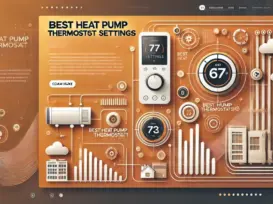Grus Home Energy - thermostat settings
Optimizing your Thermostat Settings for Comfort and Energy Savings
Thermostat settings play a crucial role in maintaining a comfortable indoor temperature while also maximizing energy efficiency. By optimizing your thermostat settings, you can create a cozy environment while reducing your energy bills and minimizing your carbon footprint.
One of the first considerations when setting your thermostat is the temperature you prefer for your home. During the winter months, the ideal indoor temperature is typically around 68 degrees Fahrenheit, while in the summer, most people find comfort at around 78 degrees Fahrenheit. However, these settings can vary based on personal preferences and household needs.
To achieve the perfect balance between comfort and energy savings, consider adjusting your thermostat settings based on your schedule. For example, if you are away from home during the day, you can program your thermostat to lower the temperature in the winter or raise it in the summer while you are gone. This can help reduce energy consumption when no one is home without sacrificing comfort.
If you have a smart thermostat, take advantage of its features to create a customized schedule that fits your lifestyle. Smart thermostats can learn your habits and adjust the temperature accordingly, making it easy to save energy without having to constantly monitor and adjust the settings manually.
Another factor to consider when setting your thermostat is the importance of proper insulation and sealing in your home. Even the most efficient thermostat settings can be undermined by drafts and poor insulation, leading to energy waste and reduced comfort. Make sure your home is well-insulated and sealed to maximize the effectiveness of your thermostat settings.
In addition to scheduling and insulation, consider using zoning to further optimize your thermostat settings. Zoning allows you to divide your home into different areas with separate temperature controls, so you can adjust the temperature based on the specific needs of each area. This can help you avoid heating or cooling empty rooms and focus on the areas where you spend the most time.
Regular maintenance of your HVAC system is also essential to ensure that your thermostat settings are working efficiently. Dirty filters, clogged vents, and other issues can hinder the performance of your heating and cooling system, forcing it to work harder and consume more energy. By keeping your HVAC system well-maintained, you can optimize your thermostat settings and maximize energy savings.
Overall, optimizing your thermostat settings is a simple yet effective way to enhance your comfort and reduce your energy consumption. By considering factors such as temperature preferences, scheduling, insulation, zoning, and maintenance, you can create an efficient and comfortable indoor environment while also saving money on your energy bills. Take the time to fine-tune your thermostat settings and enjoy the benefits of a cozy home and lower energy costs.
Blog, Energy Savings & Cost Reduction , July 7, 2024 , 26°C, Energy Efficiency, heat pump, smart home control, smart thermostat, thermostat settings
©2025 All Rights Reserved. Grus IoT Co.,Ltd.
